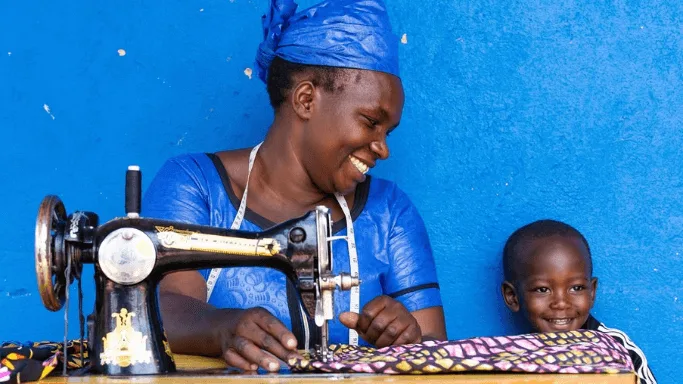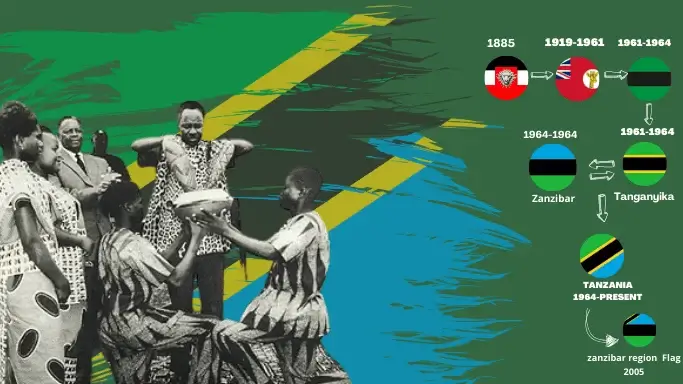Introduction to Tanzanian Culture
Tanzania culture is often recognized through familiar symbols , the Hadzabe people of the Lake Eyasi hinterland, the Maasai covered in bright Shuka cloth walking along Zanzibar’s beaches, or performing traditional dances near the Ngorongoro Conservation Area. These are the images many visitors come across in brochures, travel shows, or while exploring popular tourist routes.
But Tanzanian culture is much more than that. It is lived every day in the language people speak, the way elders are greeted, how families are structured, and the values passed quietly from one generation to the next. It’s a culture built on respect, community, tradition, and resilience, shaped by over 120 ethnic groups, yet held together by a strong national identity.
So, what is Tanzanian culture really like? It’s diverse but unified, deeply rooted yet adaptable. It shows in the foods prepared daily from fresh market ingredients, the fabrics worn to tell stories, the unspoken etiquette shared across villages and cities, and the rhythm of daily life that still values connection more than speed.
A Historical Overview of Tanzanian Culture
Tanzania’s culture is inseparable from its long and complex history. The region was once a powerful crossroads of global trade — Arab, Indian, Chinese, and European traders brought spices, goods, and religion to East Africa via the Swahili Coast. This cultural interaction created the foundation of what we now know as Swahili culture, especially strong in Zanzibar.
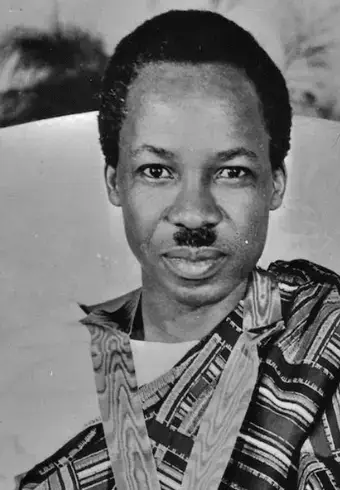
Colonialism reshaped the cultural landscape, first under German, then British rule. But post-independence, Tanzania’s founding Late Mwalimu Julius Kambarage Nyerere emphasized “Ujamaa” . A form of African socialism that deeply valued family, equality, and collective development. He believed culture should be at the heart of national identity. This ideology helped the country overcome tribal divisions and shape a unified Tanzanian culture that is admired today for its inclusiveness and strength.
So, what is Tanzania culture? It’s a story of adaptation, survival, and unity. A mosaic constantly evolving yet deeply rooted in ancient tradition.
Language and Communication In Tanzania
One of the clearest cultural values in Tanzania is the importance of communication, both verbal and non-verbal. Swahili (Kiswahili) is the national language and a source of pride for many Tanzanians. It plays a key role in unifying a country that speaks over 120 indigenous languages. English, while also official, is mainly used in higher education, law, and diplomacy.
Language is also a gateway into Tanzanian culture. Proverbs, greetings, and storytelling are powerful cultural tools. Tanzanians place a strong emphasis on polite conversation, and greetings are not just formalities, they’re essential to daily life. In Tanzania Taking time to greet someone properly reflects mutual respect.
Despite linguistic variety, Swahili connects the nation, serving not just as a practical tool, but as a living symbol of cultural pride and shared identity.
The People of Tanzania
When people ask, “Is Tanzania a good country?” the answer lies in its people. Tanzania is home to more than 120 ethnic groups, making it one of the most culturally diverse nations in Africa. Despite this incredible variety, there is a strong sense of national identity and peaceful coexistence, a rare achievement in such a multi-ethnic society.
The largest ethnic group is the Sukuma, followed by the Chaga, Haya, Nyamwezi, and the iconic Maasai. Each group has preserved its own language, rituals, music, and social customs, yet all identify proudly as Tanzanian. This is what makes the Tanzania people culture so unique: deeply rooted in tradition, yet bound by shared national values like unity (umoja), respect (heshima), and hospitality (ukarimu).
Tanzanian society is largely communal. Community matters more than individualism, and people genuinely look out for one another. It is a normal thing that a neighbour shares his/her harvest with the other neighbour, in holidays and cerebrations it it common to share food with your neighbour.In villages it is normal to give your neighbour a space in your fertile farm for them to plant something .Thats how far communal Tanzania society is.
Religion and Spiritual Life
Religion in Tanzania is not just a belief system. It’s a cultural framework that influences festivals, family life, and even politics. Roughly 61% of the population is Christian, 35% is Muslim, and around 1% follow traditional or indigenous beliefs.
In Zanzibar and other coastal areas, Islamic customs shape the rhythm of daily life, from the call to prayer to modest dress codes and religious holidays like Eid al-Fitr and Eid al-Adha. Meanwhile, in mainland regions, Christianity dominates, with celebrations like Christmas, Easter, and Independence Day (December 9) often infused with local traditions, music, and dance.
So, is Tanzania a diverse country culturally and spiritually? Absolutely. What’s remarkable is how this diversity doesn’t divide but rather coexists. Interfaith marriages, community festivals, and shared national holidays are all part of the Tanzanian way of life. The spiritual tolerance found here is both refreshing and inspiring.
Tanzanian Traditional Clothing and Style
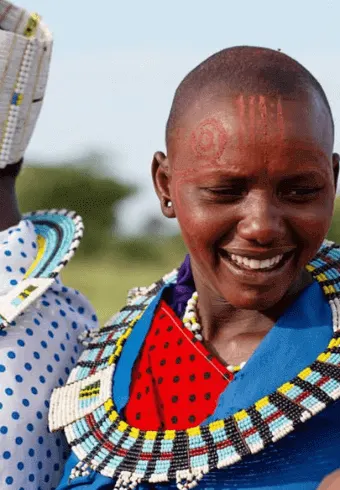
In Tanzania, clothing is a reflection of cultural values, modesty, and community respect. While Western fashion is common in cities, traditional attire remains deeply respected and widely worn, especially during ceremonies, religious occasions, and social gatherings.
Women often wear kanga or kitenge, which are bright, patterned fabrics sometimes printed with Swahili sayings. These are used to make dresses or skirt-and-blouse sets and are also wrapped around the waist when going out to local markets or casual events. Tailor-made kitenge outfits from matching skirts and tops to flowing dresses are a familiar sight across Tanzania. They’re more than clothing; they’re a way to wear pride in your heritage.”
In coastal and predominantly Muslim areas like Zanzibar, women typically wear dera or baibui long, modest dresses paired with headscarves. These outfits are not just religiously appropriate but also culturally elegant.
One of the most recognized traditional garments is the Maasai Shuka, a red or blue checkered cloth worn by the Maasai people, often combined with beadwork that holds social and symbolic meaning.
Men also wear traditional clothing for formal or religious occasions. On the coast, the kanzu a long white robe is often worn with a kofia (an embroidered cap). At home or in casual settings, coastal men may wear misuli, a loose and comfortable outfit suitable for the warm climate.
When it comes to official or formal settings, Tanzania has a clear dress code rooted in modesty and cultural norms:
- The upper part of the body must be covered — sleeveless tops or transparent clothes are considered inappropriate.
- Tight-fitting clothes are discouraged, especially in public or professional environments.
- Skirts and dresses must fall below the knees.
- For men, wearing shorts or sleeveless shirts in government offices is generally frowned upon and often not permitted especially in formal spaces like schools, ministries, or courts.
These standards are widely observed in schools, religious institutions, and public offices across Tanzania. Dressing modestly is seen not just as a personal choice but as a sign of respect for tradition, community, and social harmony.
Art, Music, and Dance
Art, music, and dance are at the heart of Tanzanian culture. They are not just forms of entertainment, but expressions of identity, community, and storytelling. Each region, and often each ethnic group, has its own unique artistic style.
Traditional dances, commonly referred to as Ngoma, vary across ethnic lines. In the north, the Sukuma people perform drumming based dances that reflect spiritual rituals and social events. In the south, the Makonde are known for their dramatic, mask-wearing performances that explore ancestral themes.
Tanzania is also home to some of Africa’s most vibrant visual art. The Makonde carvings intricate sculptures made from ebony are among the most recognized. These pieces often portray multi-figure human forms symbolizing unity, struggle, or generational connection.
In urban areas like Dar es Salaam and Arusha, modern artists blend traditional and contemporary styles to create stunning paintings and textiles. The Tingatinga style, characterized by bold colors and whimsical depictions of wildlife, is especially popular in galleries and tourist markets.
Music in Tanzania is incredibly diverse. Apart from traditional tribal instruments the common music style is Bongo Flava. A genre that mixes hip hop, reggae, and local rhythms. Music and dance are central to daily life, whether at weddings, harvest festivals, or local celebrations.
Single is also a style only common in Tanzania and no where else in the word.The rythms and sounds are very energetic living many women twerking like never before. Snoop Dog once posted a clip of women twerking, If you once came across that clip now you know they were Tanzanians.
Tanzanian Cuisine and Food Culture
Tanzania culture food is as rich and diverse as its people. The coastal cuisine is built on simple, hearty ingredients and flavored with spices that reflect centuries of coastal trade with Arab and Indian merchants. Suprisingly, the mainland don´t use a lot of spices and the food is really simple.

One of the most iconic dishes is ugali a thick, dough-like starch made from maize or cassava flour. It’s usually eaten with hands and served with meat stews, vegetables, or beans. Nyama choma (grilled meat) is another local favorite, especially during gatherings and celebrations.
On the coast, particularly in Zanzibar, the food is infused with coconut milk, cloves, cardamom, and cinnamon. Dishes like pilau, biriani, and seafood curries are staples of Swahili cuisine.
Tanzania also offers an abundance of fresh tropical fruits ,soursop, Avocados, pineapples, mangoes, papayas, bananas, and passion fruit are widely enjoyed. Street food is vibrant and affordable, with vendors and Mama Ntilie selling Pilau ,rice, Ugali chapati, mishkaki (meat skewers), Frenchfries, Chips Mayai, vitumbua(rice cakes), and freshly squeezed sugarcane juice.
Tap water is generally not safe to drink but locals do drink in most cases the boil them first. For a Foreigner I would recommend to buy bottled water like Uhai, Kilimanjaro, Dasani or Hill water.
Locally brewed beers like Kilimanjaro and Safari are popular, and if you’re lucky, you might find some Tanzanian wines, which are lesser-known but surprisingly good.The locals also brew Beers known as Gongo. The are not so safest is best to drink appropriately if you encounter one of the GONGO spaces.
Eating Etiquette in Tanzania
Meals in Tanzania are about more than food. They’re a quiet expression of culture, family, and respect. There are unspoken customs around how, where, and with whom you eat.
Sit Down to Eat
Eating while walking is unusual in Tanzania. Most people sit to eat, whether it’s on a bench, mat, or at a dining table. Meals are moments to pause and connect — not multitask.
Eating with Hands
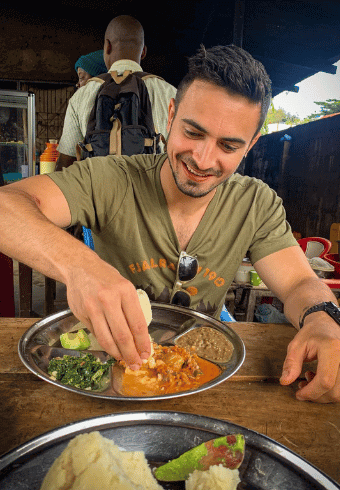
Eating with your right hand is standard in most households, particularly when enjoying dishes like ugali, rice, or cooked plantains. Before and after meals, handwashing is important. Many homes and local restaurants have designated handwashing stations, or water may be brought to you in a jug and basin.
Sharing a Plate
In some families, meals are shared from a single bowl or plate — a practice that emphasizes togetherness. When eating this way, it’s polite to eat slowly, take small portions, and never reach for the last bit of food unless invited. Eating with care shows respect for those around you, especially when food is modest.
Serving Order and Gender Roles
In many traditional households, men are served first, especially if a male guest is present. The guest will often eat alongside the men, while children and women eat separately. Children are usually served next, and women are the last to eat. While modern practices vary, this order is still followed in many rural and traditional settings.
These customs around food highlight the values of generosity, humility, and respect, all central to Tanzania culture.
Family Structure in Tanzanian Culture
In Tanzania, family is everything. It’s the foundation of community life, social expectations, and personal identity. From rural villages to city neighborhoods, the rhythm of daily life revolves around family responsibilities.
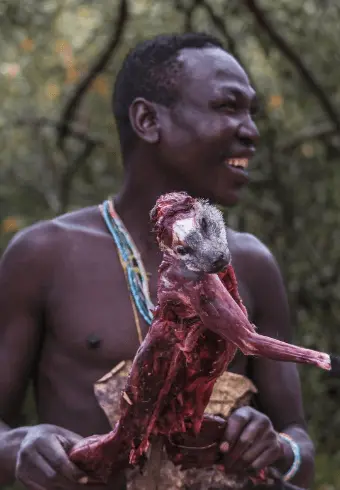
Traditionally, the man is seen as the provider, responsible for working and earning income or hunting for food in some communities .
Each morning, the woman typically takes the money provided by her husband to go to the market and buy fresh food for the day. Daily market visits are common, especially since meals are prepared from scratch using fresh ingredients. Before leaving the house, it’s also the woman who wakes up early to clean, organize the home, and manage the start of everyone’s day.
A woman’s role in the household is all-encompassing. From cooking and cleaning to budgeting and raising children, she is considered the manager of the home. In fact, in many families, if a man appears unkempt or is struggling financially, the blame often falls on the woman for not caring for him properly. Society tends to expect women to hold everything together, regardless of circumstance.
Raising children is also largely seen as a woman’s role. Most Tanzanian men are not raised with caregiving responsibilities in mind, so single fathers often rely on their mothers, sisters, or hired help or choose to remarry quickly to ensure someone is “handling the home.”

Role of Women in Tanzania Culture
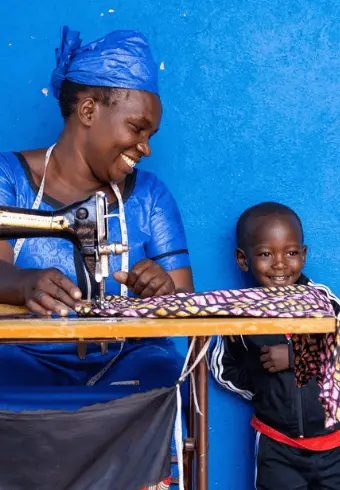
Within households, women are often the main advisors. They guide children, counsel husbands, and mediate family issues — yet when things go wrong, it’s often the woman who faces blame. Whether it’s a husband who is poorly dressed or struggling financially, society tends to assume the woman failed in her duty, while the man remains above criticism.
Despite this cultural pressure, Tanzanian women continue to lead quietly but powerfully, balancing family, business, and community.
There are many Support networks like Vicoba (village community banks) that play a major role in helping women in Tanzania . These savings groups allow women to support one another financially, start businesses, or deal with emergencies without relying on outside help. They also act as safe spaces for emotional support, advice, and mentorship especially in areas where formal services may not be accessible.Their resilience, creativity, and care are woven into the fabric of daily life , making them a driving force behind the strength of Tanzania culture itself.
Festivals and Public Celebrations in Tanzania.
Tanzania’s cultural calendar is filled with colorful events and public holidays that reflect the country’s diversity, history, and religious balance. These festivals are not just days off, they are important cultural moments that bring communities together.
Among the most notable is the Zanzibar International Film Festival (ZIFF), which showcases African cinema, music, and performing arts. It draws artists and travelers from all over the continent and beyond. Sauti ta Busara in Zanzibar is also a great way used to celebrate Tanzania Culture through Music.
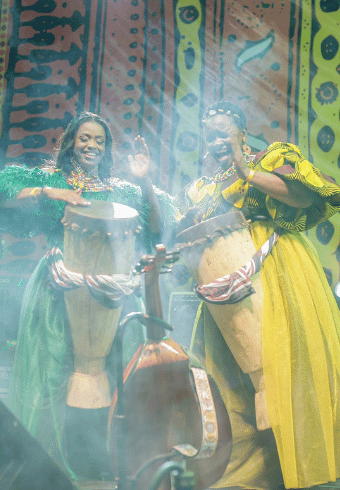
Saba Saba (July 7) and Union Day (April 26) are nationally celebrated holidays that emphasize Tanzania’s unity and independence. These are marked by parades, cultural performances, and public speeches.
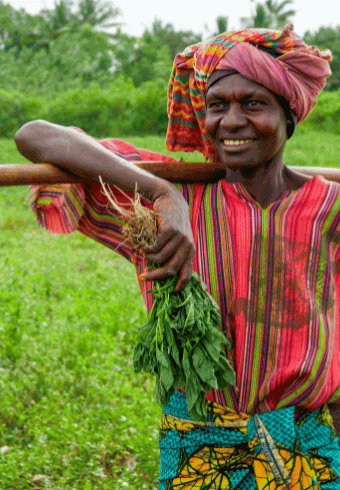
Nane Nane Day, celebrated on August 8, is a national holiday in Tanzania that honors the contribution of farming communities to the country’s economy and cultural heritage.
Many ethnic groups also celebrate their own local festivals. For example, harvest festivals are common in agricultural communities and feature traditional music, dance, and communal feasting. The Maasai Adumu known internationally as the “jumping dance” is performed during rites of passage and showcases strength and endurance.
In Zanzibar and coastal regions, Islamic festivals like Eid al-Fitr and Eid al-Adha are major cultural events.They are celebrated with communal prayers, special meals, family gatherings, and charity.
Since Most of the Tanzanian population is Christian, Easter and Christmas are also holidays that are widely Celebrated in Tanzania.These public celebrations serve as powerful reminders of Tanzania’s cultural norms, unity in diversity, and deep-rooted sense of community.
Social Norms and Etiquette in Tanzania
Tanzania is a country where respect, modesty, and kindness shape the rhythm of everyday life. Whether you’re walking through the lively streets of Dar es Salaam or visiting a quiet village near Mount Kilimanjaro, understanding the local code of conduct shows genuine appreciation for Tanzania culture.
Greetings Are a Big Deal
Don’t expect to start a conversation without saying hello, that’s just not how it works here. In Tanzania, greetings are not rushed; they set the tone. You might exchange a handshake, ask how someone’s family is doing, and share a few polite words before getting into the real topic. Skipping this part is often seen as cold or even disrespectful.Some people will remind you by greeting you first before answering your question.
Elders should be greeted with extra respect “Shikamoo” is a common phrase that shows deference, and the response “Marahaba” is a warm acknowledgement. This simple exchange carries cultural weight and earns appreciation.People of the same age greets each others with Mambo and the response is Poa or Habari if it’s not a casual setting usually answered with Nzuri. It is also common and Important to say Kwaheri as Good Bye when you are living.
Modesty in Dress
How you present yourself matters, not just in dress, but in attitude. Especially in coastal regions and rural communities, dressing modestly is more than a fashion choice. it’s a show of respect for the community. Short, tight, or see-through clothing is best avoided outside tourist resorts. Covering shoulders and legs is expected in public places, especially religious and government spaces.
Tanzanian Work Culture
In professional settings, Tanzanian culture leans more toward relationship-building than fast transactions. Trust and mutual understanding are key. Punctuality can be relaxed, but respectful communication is always valued. Taking time to connect before jumping into business is seen as thoughtful and appropriate.
It is not an option to not bargain ,Always bargain before buying something ,chances are the first price you are given is 25% or 50% that the real price .This applies even to the locals .We all bargain in Tanzania. Remember, There is no Business without bargaining.
Tanzania Tipping Culture
While tipping is not compulsory, it’s certainly appreciated. In restaurants, rounding up the bill or leaving a 5–10% tip is a common gesture of gratitude. For porters, hotel staff, drivers, and guides, small tips go a long way. Not because it’s expected, but because it’s kind. Tanzanians value generosity, especially when it’s given sincerely. There are some places of course you do not tip like at a Chips Vendor or at a Mangi local shop.It is for you to choose depending on how happy you were satisfied with the service.
Tanzania Shopping and Cultural Souvenirs
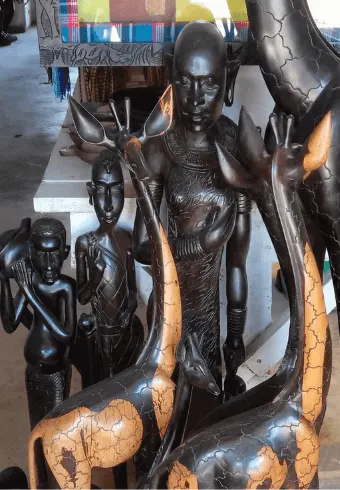
Tanzania offers a vibrant and authentic shopping experience that reflects its diverse culture and skilled craftsmanship. Whether you’re in a local market or a coastal boutique, there’s no shortage of meaningful keepsakes.
Makonde carvings, created by the Makonde people in southern Tanzania, are among the most iconic items. These intricate ebony sculptures often depict human figures, ancestral themes, or abstract forms that tell cultural stories.
Kitenge fabric, both uncut and tailored into dresses, skirts, or shirts, is widely available and makes for a bold, wearable souvenir. Beaded jewelry, especially from the Maasai, is popular among visitors and locals alike. Each color and design in the beadwork carries symbolic meaning, often tied to age, status, or tribe.
Zanzibar is especially famous for its spices cloves, cinnamon, nutmeg, and cardamom which are sold fresh in bustling spice markets. These are not only flavorful souvenirs but also a window into the region’s trade history.
Tanzanite, a rare blue-purple gemstone found only in northern Tanzania near Mount Kilimanjaro, is another highly sought-after souvenir. Though more of a luxury item, it’s a beautiful reminder of the country’s natural wealth.
Shopping in Tanzania isn’t just about buying, it’s about connecting with culture, hearing stories behind the crafts, and supporting local artisans who keep traditions alive.
The Role of Education and Literacy in Cultural Preservation
Education has played a critical role in preserving and shaping Tanzania culture. After gaining independence in 1961, Tanzania prioritized mass literacy campaigns under the leadership of Julius Nyerere. These efforts helped unify a multilingual society by promoting Swahili as the language of instruction and national identity.
Swahili wasn’t just a practical tool , it became a cultural bridge between ethnic groups. Schools began to teach Tanzanian history, traditional values, and civic responsibility, reinforcing cultural awareness in the younger generations. In recent years, the government has reintroduced history education in secondary schools, ensuring that students understand the country’s heritage from ancient civilizations to the colonial and post-independence eras.
This investment in cultural education has also opened up economic opportunities, especially in the tourism sector. Today, cultural tourism initiatives such as village homestays, Maasai learning tours, Swahili language courses, and traditional art workshops are thriving because Tanzanians are educated about their own cultural roots and know how to share them authentically.
For content creators, educators, or tourism businesses, this cultural-literacy connection creates monetizable potential through:
- Online Swahili language courses
- Cultural awareness webinars
- Heritage-based travel itineraries
- Educational YouTube documentaries focused on Tanzanian traditions
The Cultural Legacy of Julius Nyerere

No conversation about Tanzania culture is complete without mentioning Julius Kambarage Nyerere, the country’s first president and one of Africa’s most visionary leaders. Known as “Mwalimu” (teacher), Nyerere’s approach to nation-building was rooted in cultural identity, unity, and self-reliance.
He saw that colonialism had fractured traditional values and left people disconnected from their roots. His philosophy of Ujamaa (familyhood) promoted communal living, cooperation, and pride in being Tanzanian — not just a member of one tribe. He pushed for Swahili to be adopted nationwide to bridge tribal divisions and foster a sense of shared identity.
Nyerere believed that economic development should never come at the expense of cultural dignity. His speeches, written in accessible Swahili, often focused on reclaiming The Tanzania culture as a source of strength.
Today, Nyerere’s cultural legacy continues to inspire museums, literature, community development programs, and academic studies. His model offers a monetization opportunity for:
- Heritage tourism centered on Nyerere’s birthplace and political sites
- Books, documentaries, and courses about Ujamaa philosophy and African leadership
- Workshops on African socialism and indigenous knowledge systems
Promoting content around Nyerere is not only a way to preserve his vision. It’s also a unique niche for creators in history, culture, and education spaces.
Cultural Resilience and Modern Challenges
In today’s rapidly globalizing world, Tanzania culture faces both opportunities and threats. Urban migration, social media, foreign influence, and consumerism are shifting the cultural landscape, especially for the younger generation.
But Tanzanian culture has shown impressive resilience. Traditional ceremonies, languages, and customs are still practiced in rural communities and even in modern cities. Cultural festivals, like the Zanzibar International Film Festival (ZIFF)and Bagamoyo Arts Festival, have become platforms to promote and preserve local art, music, and stories while attracting global audiences and sponsors.
The rise of digital platforms has also sparked a cultural revival. Tanzanian creators are now sharing dances, recipes, fashion, and history on YouTube, TikTok, and Instagram reaching diasporas and cultural enthusiasts worldwide.
Places to Visit and Learn About Tanzania Culture
Understanding Tanzania culture goes beyond observing . It requires immersion. From ancient archaeological wonders to vibrant living traditions, Tanzania offers a rich tapestry of experiences that reflect both its deep-rooted past and dynamic present. Here are some of the most culturally significant destinations where travelers, students, and locals alike can connect with Tanzania’s cultural heritage
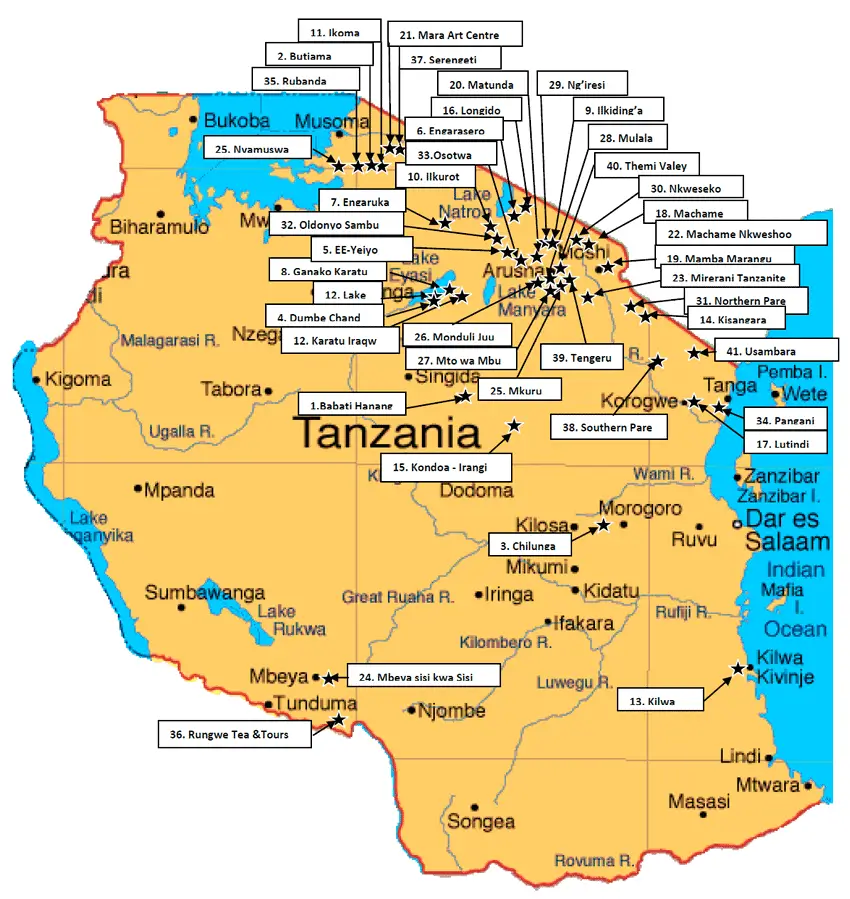
.
1. Olduvai Gorge – Arusha Region
Known as the “Cradle of Mankind,” Olduvai Gorge is one of the most important paleoanthropological sites in the world. It showcases early human evolution and tells the story of Tanzania’s deep ancestral history. Excavations here have uncovered fossils of pre-human hominids dating back over two million years. Visiting the site offers insight into the early interactions between humanity and the physical environment. A crucial part of Tanzania’s cultural heritage.
2. Isimila Stone Age Site – Iringa
Located in southern Tanzania, Isimila features stone tools and archaeological remnants that date back 60,000 to 100,000 years. The natural pillars and eroded sandstone create a stunning landscape while offering context into prehistoric life. It’s a site that embodies the tangible aspects of cultural heritage and the human journey.
3. Kilwa Kisiwani and Songo Mnara – Lindi Region
Both are UNESCO World Heritage Sites situated along the Indian Ocean coast. Kilwa Kisiwani was once a powerful Swahili trading city-state in the 13th to 16th centuries, dealing in gold, ivory, and spices. Its coral-stone architecture, including mosques and palaces, is a testament to Islamic influence in East Africa. Visiting these ruins highlights Tanzania’s historical trade connections and its cultural blend of African, Arab, and Persian influences.
4. Zanzibar Stone Town – Zanzibar
Stone Town reflects centuries of cultural exchange. Its narrow streets, carved doors, old forts, and mosques capture the essence of Swahili coastal culture. Beyond architecture, visitors can experience the Zanzibar people hospitality, traditional music, Swahili food, and local crafts. It’s a living heritage that speaks volumes of Tanzania’s identity.
5. Bagamoyo Historic Town – Pwani Region
Once a center for the East African slave and ivory trade, Bagamoyo also became a major missionary and colonial hub. Its buildings, museums, and art institutions like the Bagamoyo College of Arts preserve the memory of resilience and resistance. Today, it’s also a hub for artists, dancers, and cultural tourism activities.
6. Kaole Ruins – Bagamoyo
These ruins include the remains of one of the earliest Islamic settlements in East Africa, dating back to the 13th century. The site includes mosques, tombs, and coral stone structures — all important to understanding Tanzania’s early religious and architectural development.
7. Ngorongoro Conservation Area – Arusha Region
Aside from its natural beauty, Ngorongoro is home to the Maasai and is close to many cultural sites. The coexistence of wildlife, traditional pastoralist culture, and archaeological sites like Laetoli (with hominid footprints) offers a full-circle view of Tanzania’s cultural heritage.
8. Cultural Tourism Programs – Nationwide
Run by communities, these programs allow visitors to experience daily Tanzanian life — including food preparation, traditional dances, crafts, and storytelling. Originally initiated by Maasai communities in the north, CTPs have expanded to areas like Pangani, Mto wa Mbu, Iringa, and Usambara. They offer sustainable tourism experiences that directly benefit local populations.
9. Bagamoyo Cultural Heritage Tourism Cluster (BCHTC)
This initiative brings together local artisans, historians, tour guides, and cultural performers in Bagamoyo to collectively promote and preserve their heritage. Visitors can engage in workshops, live performances, and curated historical tours.
10. Tanga Tourism Network Association (TATONA)
In Tanga, this network promotes cultural tourism by involving local service providers — from craftspeople and guides to hotel owners. The region is rich in natural and built heritage, offering a unique mix of coastal and inland experiences.
11. Museums and National Archives – Dar es Salaam & Beyond
The National Museum and House of Culture in Dar es Salaam houses many artifacts related to Tanzania’s history and heritage. There are also smaller museums across the country focusing on ethnic traditions, colonial history, and art.
12. Living Villages
Many villages near parks like Serengeti, Tarangire, and Manyara offer cultural experiences where travelers can engage with local people. These visits include activities such as milking cows, making crafts, and participating in traditional songs and dances. Materuni Village, located near Moshi at the foothills of Mount Kilimanjaro, is another standout destination. It offers visitors an immersive look into Chagga traditions, including local coffee-making tours, village walks, and waterfall visits , all wrapped in genuine community hospitality.
Conclusion
Tanzania’s culture isn’t something you just read about , it’s something you feel the moment you arrive. It’s in the warmth of a greeting, the rhythm of a drumbeat, the scent of spiced food in the market, and the way people take pride in their traditions. It’s not loud or flashy, but it runs deep shaped by history, held together by community, and carried forward through everyday life.
What makes Tanzania culture so unique isn’t just the number of tribes or languages — it’s how all of it fits together. Despite its diversity, there’s a strong sense of unity, built on shared values like respect, modesty, and hospitality. People may come from different backgrounds, but there’s a clear understanding of what it means to be Tanzanian.
Culture here isn’t frozen in time. It’s alive. It adapts without forgetting where it came from. From traditional dress and ceremonies to modern music and digital art, Tanzanians continue to find ways to celebrate who they are and share that with the world.
In the end, Tanzanian culture is more than just tradition. It’s resilience. It’s identity. And for anyone lucky enough to experience it, it leaves a lasting impression.

